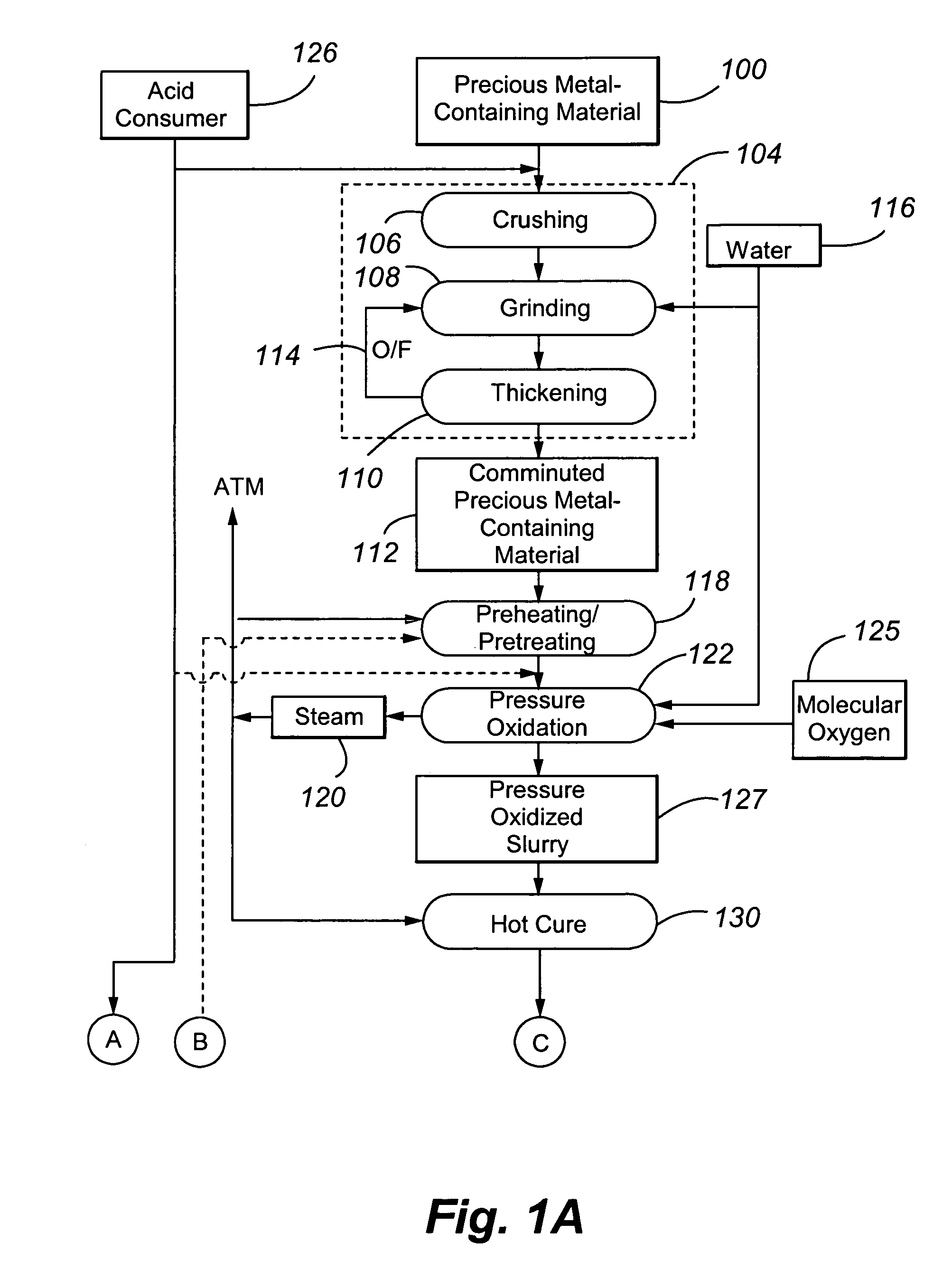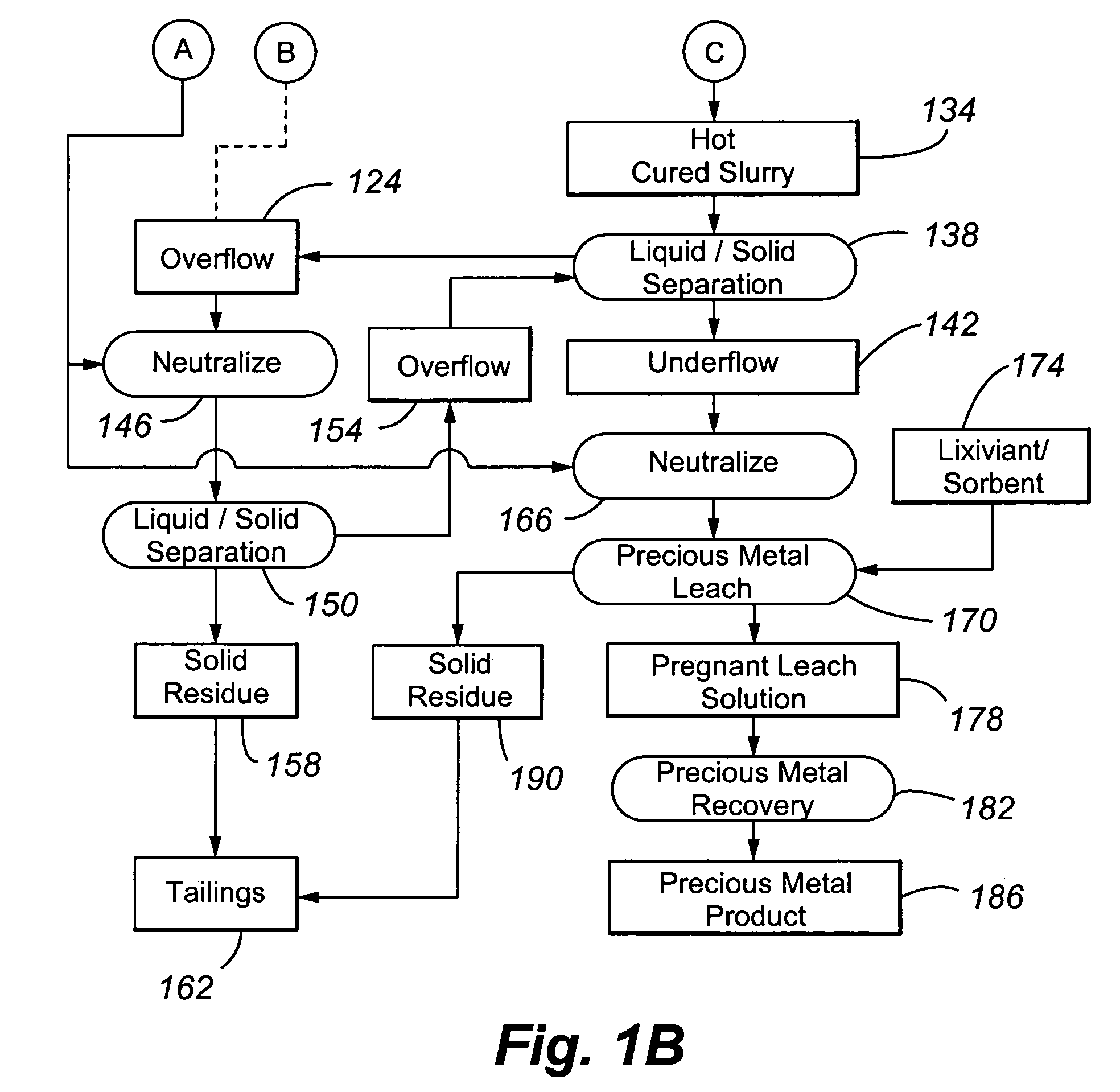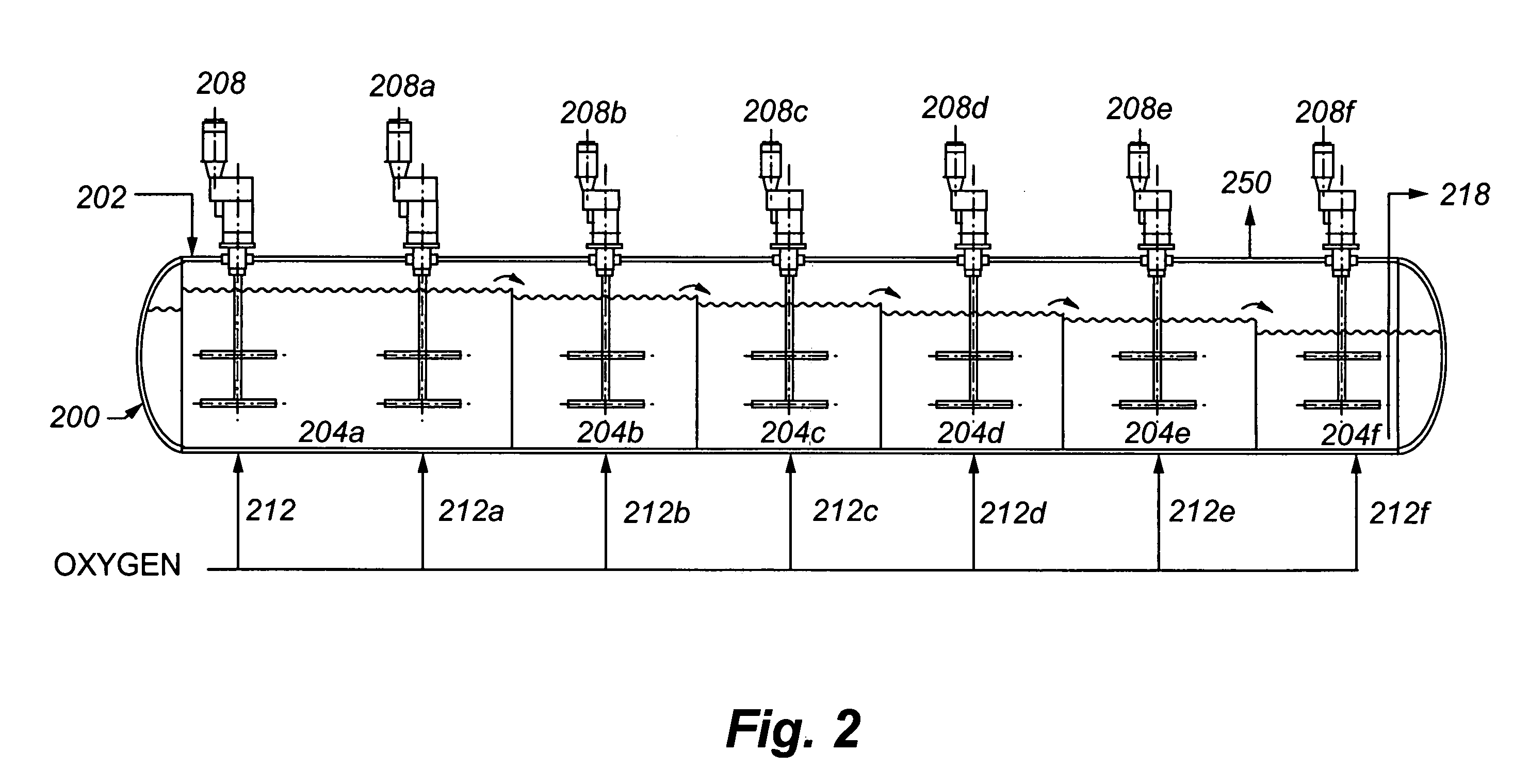Reduction of lime consumption when treating refractory gold ores or concentrates
a technology of refractory gold ore and concentrate, which is applied in the field of recovery of precious metals from sulphidic materials, can solve the problems of high instability of basic iron sulphate formed and precipitated during pressure oxidation, and achieve the effects of reducing the level of sulphuric acid in the first and/or second autoclave compartment/stage, reducing the rate of oxidation reaction, and more thermodynamically stabl
- Summary
- Abstract
- Description
- Claims
- Application Information
AI Technical Summary
Benefits of technology
Problems solved by technology
Method used
Image
Examples
example 1
[0072]Example 1 was performed to illustrate a conventional precious metal pressure oxidation process followed by cyanidation. No attempt is made in the process to control basic iron sulphate and jarosite formation.
[0073]A refractory gold ore containing gold-bearing pyrite assayed 8.2% S2−, 3.50 g / t Au and 33.9 g / t Ag. It was tested in a continuous pilot autoclave with a 30 L operating volume. Under typical pressure oxidation conditions (slurry temperature of about 230° C., slurry residence time of about 60 minutes, 100 psi oxygen overpressure, and a slurry content of about 30% solids), basic iron sulphate and jarosite were produced in the autoclave. The autoclave discharge solids assayed 9.7% SO4. The precious metal was recovered by CIL, after the pressure oxidized solids were neutralized to a pH of pH 10.5. Recoveries were 96.0% and 80% for gold and silver, respectively, but lime consumption was very high at 77 kg CaO / t-solid. Under these conditions, sulphide sulphur oxidation in t...
example 2
[0074]Example 2 also illustrates a conventional precious metal pressure oxidation process followed by cyanidation. In the process, the feed slurry was diluted in an attempt to control basic iron sulphate and jarosite formation.
[0075]The same ore as used in Example 1 was processed through the same pilot continuous autoclave. All conditions were kept the same as Example 1, with the exception that the slurry pulp density was reduced (or diluted) to about 20% solids. The autoclave discharge solids assayed 5.8% SO4, and lime consumption was reduced to 12.5 kg CaO / t-solid to achieve a final pH of about 10.5 for the washed discharge solids. Gold and silver recoveries were 95.8 and 9.0%, respectively. Gold extraction was unchanged but silver recovery was significantly lower. These results show that dilution of the feed is effective in reducing basic iron sulphate formation and thereby reducing lime consumption. But, as noted above, this will result in higher capital costs. Silver recovery w...
example 3
[0076]Example 3 also illustrates a conventional precious metal pressure oxidation process followed by cyanidation. In the process, the feed slurry was contacted with an acid consumer during pressure oxidation in an attempt to control basic iron sulphate and jarosite formation.
[0077]The same ore as presented above was processed through the same pilot autoclave, using the same conditions as in Example 1, but at a higher pulp density of 35% solids. In one test, no limestone was added to the autoclave feed, and, in a second test, 40 kg limestone / t-solid was added. The added limestone corresponds to a CO3 / S2− molar ratio of 0.155. Results are summarized in Table 1 below:
[0078]
TABLE 1The effect of limestone addition to the autoclave feed on subsequentlime consumption and gold recovery during cyanidation and CIL.% Aukg CaO / t-solidTestExtractionConsumedWithout limestone addition98.488.3With 40 kg / t limestone = CO3 / S2− molar97.720.5ratio of 0.155
[0079]This result showed that the addition of ...
PUM
| Property | Measurement | Unit |
|---|---|---|
| pH | aaaaa | aaaaa |
| pH | aaaaa | aaaaa |
| pH | aaaaa | aaaaa |
Abstract
Description
Claims
Application Information
 Login to View More
Login to View More - R&D
- Intellectual Property
- Life Sciences
- Materials
- Tech Scout
- Unparalleled Data Quality
- Higher Quality Content
- 60% Fewer Hallucinations
Browse by: Latest US Patents, China's latest patents, Technical Efficacy Thesaurus, Application Domain, Technology Topic, Popular Technical Reports.
© 2025 PatSnap. All rights reserved.Legal|Privacy policy|Modern Slavery Act Transparency Statement|Sitemap|About US| Contact US: help@patsnap.com



